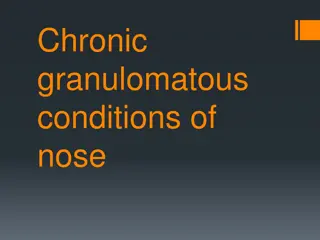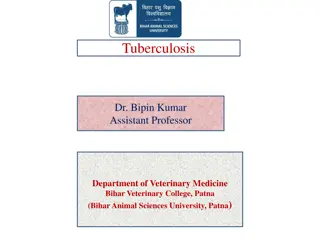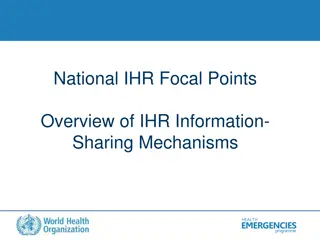Understanding Fluorosis: A Critical Health Concern in Endemic Regions
Fluorosis, a prevalent condition in parts of India, China, Tanzania, and South Africa, affects millions due to high fluoride levels in drinking water. It manifests as dental and skeletal fluorosis, causing various symptoms based on exposure levels. Dental fluorosis leads to enamel discoloration and pitting, while skeletal fluorosis results in bone deformities and increased fracture risk. Prevention strategies are crucial to address this public health issue.
Download Presentation

Please find below an Image/Link to download the presentation.
The content on the website is provided AS IS for your information and personal use only. It may not be sold, licensed, or shared on other websites without obtaining consent from the author. Download presentation by click this link. If you encounter any issues during the download, it is possible that the publisher has removed the file from their server.
E N D
Presentation Transcript
MAHARSHI DAYANAND SARASWATI UNIVERSITY COMMUNITY NUTRITION TOPIC:Fluorosis
FLUOROSIS INCIDENCE Fluorosis is prevalent in certain parts of India, China, Tanzania, South Africa. In India, an estimated 62 million people, 2million children in 17 states are affected with endemic fluorosis. The survey revealed that the major source of drinking Water was bore wells, which had fluoride levels ranging from 0.5-6.6 Ppm. Dental mottling was in the range of 17-36 per cent. The prevalence was relatively higher among the children of 10-14 years (30 to 67 per cent) in all the district surveyed.
The overall prevalence of skeletal fluorosis in population of all age groups was found to be less than 1 per cent.The heavy deposits of fluoride bearing minerals in the rock are mainly responsible for endemic fluorosis in India. The fluoride content of drinking water varies between 0.5-0.25 mg/l in different parts of India Its presence in water >2-3 ppm leads to fluorosis. Fluoride toxicity manifests in two major forms and skeletal fluorosis and dental fluorises. SIGNS AND SYMPTOMS The severity and duration of symptoms of flourises depends on a person's age, nutritional status, environment, kidney function, amount of fluoride ingested, genetic background, tendency to
allergies etc. Fluorosis usually begins with dental flurosis and constant excessive fluoride consumption later result in skeletal fluorises. Dental Fluorosis :Occurs where the fluoride content of water is high (>3-5).mottling of permanent teeth is common. .-The enamel losses its luster and become rough. - Symptoms may range from tiny white streaks to dark brown strains and rough, pitted enamel. Incisors of the upper jaw are more affected. - Occurs in children who are exposed to high floride levels before completion of mineralization of teeth.
Severity of dental fluorisis rated using following categories :- Questionable:Enamel shows slight changes ranging from few white flecks to occasional white spots. Very mild :Small opaque paper white areas are scattered over less than 25%of tooth surface. Mild :White opaque areas on the less than 50%of the surface. Moderate :White opaque areas affect more than 50% of the enamel surface. Severe : All enamel surfaces are affected. The teeth also have pitting.
Skeletal Fluorosis : This disease exhibits very slow progression - Patients develops stiffness, joint pain and deformities of the spine. - Clinical manifestation of fluorosis is called genu valgum (knock knees. - Genu valgum results when fluoride intake is higher than 2-16 mg/l. - Bones are hardened and thus less elastic resulting in an increased frequency of fracture. High fluoride level may also interfere with iodine Metabolism, causing hypothyroidism. The hormones of bone Metabolism like Parathyroid and growth hormone level in serum are elevated.
It may also cause vitamin D vitamin deficiencies which cause causes deformities in young children. CAUSES Caused by excessive intake of fluoride from multiple sources like food, water, air and excessive use of toothpastes. Drinking water is the most significant source. Moderate level chronic exposure is more common. Acute high level exposure is rare and usually occurs due to contamination of water sources. High levels of fluoride content are mostly found at the foot of high mountains or in areas where geologic deposits are collected in sea..
TREATMENT - In severe cases, whitening of b the teeth, veneers or other dentistry techniques can be used to correct any permanent discolouration. - supplementation of Vitamin C alleviate the symptoms of endemic flurosis. - Tamarind increases urinary excretion of fluoride hence delays progression of flurosis. PREVENTION - Creating awareness through health education and discouraging consuming water from high fluoride sources. - Administrators should be sensitize for identifying sources with,
more than permissible amount of fluoride b in drinking water. - Supplementation of affected population with micronutrients like Ca, Vit. D and C. - Propagation and supply of domestic defluoridators. - Avoiding fluoride rich food such as tea, tobacco and fluoride rich toothpaste and encouraging consumption of food touch in Ca, vitamin C, D, and protein. - Make efforts to dig bore wells in fluoride zones.
















































